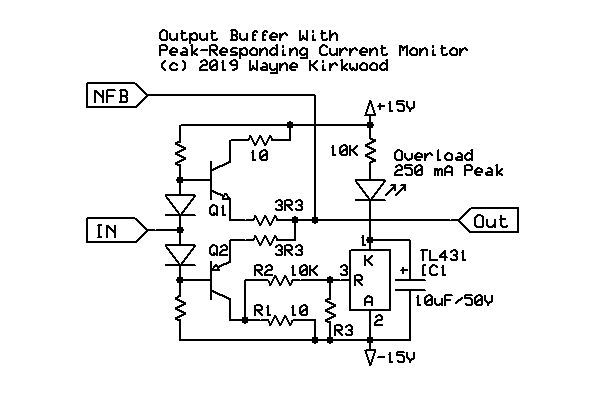rock soderstrom
Tour de France
I don't know who created this table, but I have been using it successfully for years. It has proven itself...Did you measure inductance? I know I can use Spice to get it, but the results are somewhat inaccurate.
I don't know who created this table, but I have been using it successfully for years. It has proven itself...Did you measure inductance? I know I can use Spice to get it, but the results are somewhat inaccurate.
Thanks! The results I get from a Spice simulation are close enough, about 5%. I wan't sure because of lack of info regarding Back EMF and damping.Heres a chart I found on the Accutronics page with inductances and reccomended drive current

I've found that once that JST connector is inserted onto the pins it can't be removed without risking breaking the wires. And yes they are potentially super-fragile when placed in service.I just discovered another tank I have has an open circuit pickup coil ,
its of the type in the pic below , with the plastic mini connector ,
Theres a lot of complaints about these kinds of transducers breaking as any movement of the sub tray exerts a force directly on the tiny magnet wires ,which finally fatigue and get broken .
My advice is go for the kind where the connecting wires are taped onto the bobbin in the old fashioned way .View attachment 120233

me tooI was around during the changeover from springs to digital FX , the extra presets were a very welcome addition to mixers .
I don't have any first hand experience with troubleshooting these pups but IIRC the selector switch was a rotary encoder (?) connected via a ribbon cable. Dodgy efx selection might suggest looking into that switch/cable.Something I noticed about the Peaveys was very often the FX went wonky after a while , there was still some kind of an effect came out but typically the presets didnt fuction as they were supposed to anymore .
I am not aware of any disproportionate failure pattern. These powered mixers were pretty large sellers.I got countless units in for repair , but the cost of the replacement board , for something that in all likelyhood would fail again ,I wasnt going to take the chance ,and recomended the customer use an external Fx unit instead .
Bingo. I was pretty much stuck with what the digital group gave me, but the performance of the early digital efx boards was pretty marginal. The digital lads used lots of HF pre/de-emphasis in the reverb algorithms to improve S/N-noise floor. Sadly on some of the reverb presets, the HF headroom was almost non-existent. They graciously gave users a red blinky LED to indicate saturation (probably some register overflow flag). I suggested to the digital boys to instead take that LED overflow LED flag to drive a simple JFET limiter and compress loud HF passages only when and only as much as needed to prevent OF. I scratched out a simple (analog) limiter circuit for one of the junior digital engineers to implement and it worked. Still not hifi but sucked somewhat less.Trying to place a reverb tank in close proximity to a very large transformer inside a powered mixer ,thats probably not easy to do and avoid magnetic interference at the same time .
I don't know if it was quite that easy, and Peavey was a sharp pencil organization.We saw the lenghts Fender had to go to to make his standalone reverb quiet .
Im just suprised more amp manufacturers didnt try a twin tank arrangement ,
the extra springs adding noticably to the smoothness of the decay ,while humbucking coils greatly reduce the magintude of any nearby sources of noise .
It clearly states in the Accutronics docs that opamps alone provide marginal drive capabillity , suggesting something more like a small speaker driving amp is whats needed , the same advice was echoed by many on forums and it fits with my own experience ,
Even the tank drive in most tube amps is a bit marginal , tubes are run flat out, often not far off full HT voltage , they need changing out much more frequently than other preamp tubes .
One of the reasons why I was looking for the inductance values is to evaluate the drive requirements.It clearly states in the Accutronics docs that opamps alone provide marginal drive capabillity , suggesting something more like a small speaker driving amp is whats needed , the same advice was echoed by many on forums and it fits with my own experience ,
Even the tank drive in most tube amps is a bit marginal , tubes are run flat out, often not far off full HT voltage , they need changing out much more frequently than other preamp tubes .

Like when Bill Price told me how happy all the engineers were at Decca when the techs removed all the valves from the consoles and replaced with transistors. Removed all the issues they always had fault finding valves. They did it to the mics too!I was very happy to replace spring reverbs with digital EFX inside powered mixers. as soon as the digital EFX became acceptable to customers. My engineers working for me appreciated the easier interface.